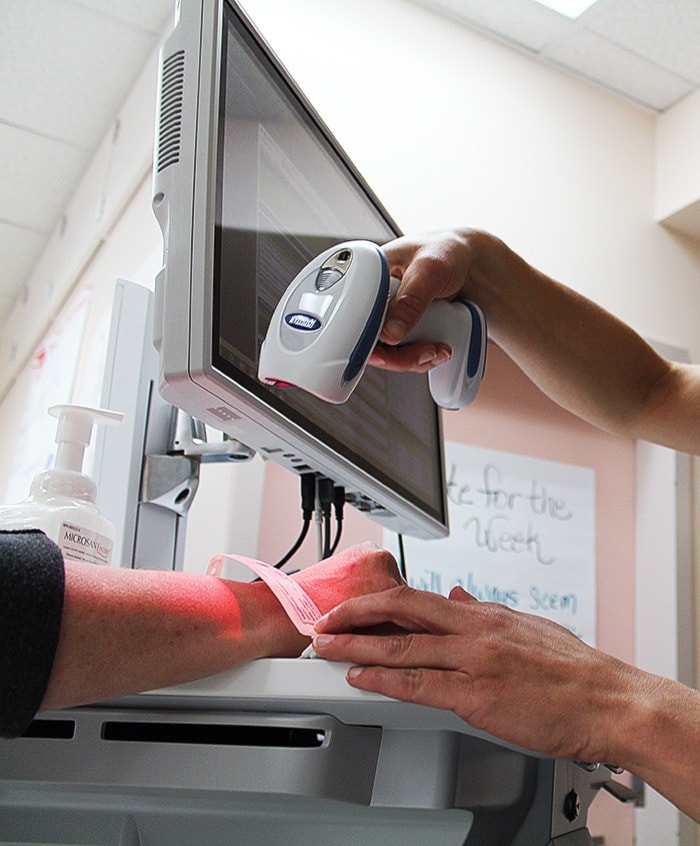A controversial new electronic record-keeping system at Nanaimo Regional General Hospital continues to be implemented, and is safe and working as planned according to Island Health.
Despite a report doctors in the emergency room and intensive care unit had stopped using the $178-million iHealth system May 25, all information continues to be input and recorded using that system, Island Health vice-president of communications Toni O’Keeffe told the News Bulletin in an email.
“The iHealth system is working as it should, and NRGH, including the emergency department, has not gone back to paper,” O’Keeffe said. “All orders are still being input into iHealth electronically. To assist some doctors in adapting to the technology, we have provided support from clinical staff that are entering the orders for doctors. This support is available 24 /7.”
Since its introduction in Nanaimo and Parksville March 19 as a test run for future implementation Island-wide, iHealth has been criticized for slowing diagnosis and treatment speeds as health practitioners struggle to adjust. Island Health has chalked the difficulties up to an expected learning curve but some insiders have privately indicated some problems may be the fault of the system itself.
O’Keeffe, however, said the system is working as intended and there have been no incidents or harm related to wrong information or wrong dosages. On the contrary, she said, it is preventing that from happening.
“Across the country, thousands of medication mistakes are made daily due to human error, and this system is designed to catch them. (It) will produce a warning when an order is entered, for example, if the dosage is too high for a patient's weight, if the drug is not appropriate for a particular disease or if there's a drug conflict.
“The system will and already is improving the quality and safety of care. The challenges we have had are related to work flow. It takes time for users to become proficient in the use of system like this.”
She acknowledged the documentation has been particularly challenging in the busy emergency department.
Dr. Drew Digney, emergency and trauma site chief for Nanaimo, did not respond to an interview request. Nanaimo area doctors were expected to meet this week to discuss the situation and debate what action they may need to take, if any.
O’Keefe said Island Health will continue to work side-by-side with employees, make modifications where necessary, and provide additional technical support until staff is comfortable with the technology.
“We recognize that this change has been a challenge for some providers while other providers have had no problems adjusting to the new system,” she said. “Implementing a system transformation of this scope is difficult and we have always known that once implementation began we would need to make modifications along the way.
“The system is safe and it is doing what it is intended to do.”
Follow me on Twitter @JohnMcKinleyBP



